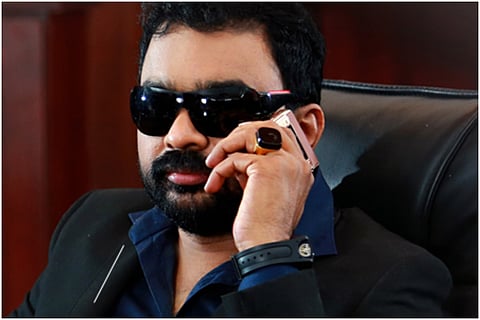

Monson Mavunkal is seen in the video talking to one of his customers about a flight he once took from Delhi to Kerala. As in other videos, he refers to ‘big’ things causally. He says that someone who appeared to be an ordinary passenger on the flight was the king of Mysore. His customer, hearing the mention of the king, appears to be floored. The ‘antique collector’ who has been in the news recently after his arrest in a fraud case must have used the same tricks to con other customers. And the customers didn’t bother to test whether the items they were buying were actually antiques.
Bina Thomas Tharakan, founder Heritage Walk Trivandrum and an archaeologist based in Thiruvananthapuram, says that people were conned as they lack a sense of history to understand what is myth and what is reality. “Indians basically don’t have a sense of history, we don’t even know our own religious leaders. This is the biggest problem. Because of this, we tend to fall for appearances and buy anything without actually verifying its authenticity. South East Asian markets are thriving with such goods,” Bina tells TNM. While verifying an antique is a scientific process that can be done by spending some time, she says it is lack of mere logic that made some fall for Monson’s claims of possessing items like Judas’s coins to Lord Krishna’s pot in his collection.
PJ Cherian, Executive Director of PAMA – Institute for Trans-disciplinary Archaeological Sciences which was involved in the archaeological excavation at Pattanam in Ernakulam, says that we understand the past as a myth constituted by fictional characters and stories. “As a result we tend to fictionalise and romanticise history. And Monson being a ‘clever’ person knows what the social mind is after. We believe archaeological items to be exotic things, but in fact they are not. This is our intellectual poverty,” he says.
For an item to be classified as an antique, it has to be 100 years old or above. There is a process for that. If you’re in possession of a piece and want to get it officially classified as an antique, you have to register it through the Archaeological Survey of India (ASI).
Applications to the ASI for classifying something as an antique are vetted by experts who will certify it based on their assessment. A piece classified as antique should not be sold (exported) outside India as per the Antiquities and Art Treasures Act, 1972. According to the Act, to sell an antique (inside the country), one should possess a license for the same.
Raigon Stanley, who runs the Grey Book Museum & Archives in Fort Kochi, tells TNM that experienced buyers can estimate the time period of an item with experience and practice. “One thing to note is that the people who were ‘cheated’ by Monson were not in this field. Another thing is that Monson’s was not a private museum, that usage is wrong. It was just a collection of curios in his house. But it is very evident even from the pictures and videos that have now surfaced that most of the things in his collection are not antiques. They look like fancy products. It is due to sheer ignorance about antiques that people were misled. A very basic assessment can be made from an item’s material and style. That will give an idea about the time period of the said artefact. It will also have documents to prove its authenticity, like the antiquity registration certificate from ASI. One reason people bought from Monson could be that the items in his possession were replicas of antiques,” Raigon says.
“Each material has its specific chemical composition, which will indicate where it was made. If it is organic, it can be dated through scientific methods. Many are now ridiculing this Monson, but we should be ridiculing ourselves. We have fictionalised history and this person utilised that. The media is also responsible,” Cherian adds.
Bina says that there are a lot of scientific methods to verify something as antique but no one takes the effort.
“People take pride in their inheritance, so they fall for something that showcases their inherited ancestry. Though we can try to teach them history and heritage, they will dig something out from their ancestry that makes them proud. The so-called dealers cash in on the genuine interest in ancestry, on people’s emotions. When people are shown something and told it’s Moses’s stick, they think emotionally not rationally. I’m sure that the person who buys something he believed to be Moses’s stick will go around saying that his great grandfather was related to Moses. When questioned, he might say that his family tree started with Moses. And people would connect with such things. Even some private museums sell such false pieces and notions, and people just lap it up. No one stops to verify the information,” she says.
All experts point out that lack of awareness is the main problem as well as the takeaway from the controversies surrounding Monson and how he made crores from his ‘business’.
Raigon says that creating awareness and appreciation for history should start early. “In European countries, children are exposed to museums and artefacts from the school level. So people have a basic understanding of history and antiques. That’s what we lack here. We don’t have enough museums here and it is not encouraged in schools. Children here are learning history only through books. At least now we have to turn to our schools to create this basic awareness about historical artefacts by taking children to museums and historical places.”